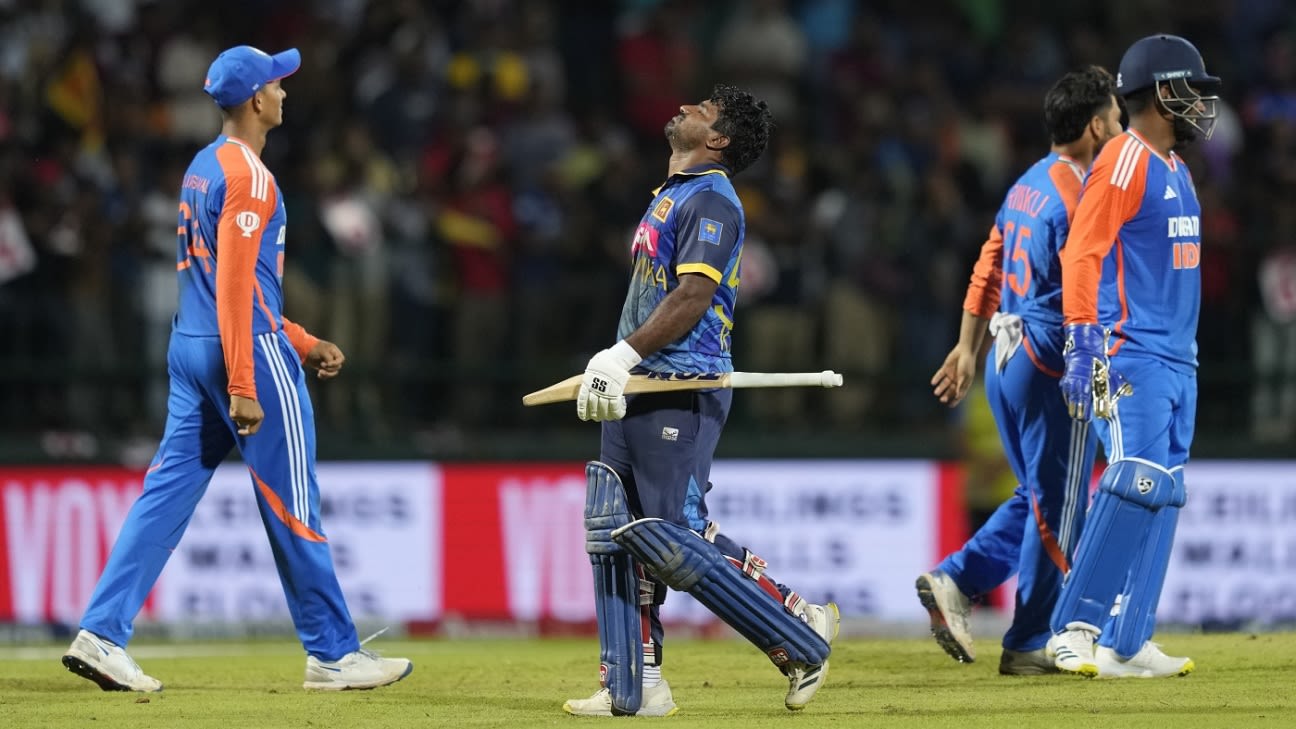Sri Lanka's men's cricket team has once again proven their mastery of the art of the batting collapse, particularly against India. In the recent T20I series, they've become a textbook example of how not to bat, delivering performances so spectacularly awful, they'd make even the most seasoned cricket fan question the very fabric of reality.
Their third T20I against India was a case study in utter incompetence. Chasing a modest 138 for victory, they were comfortably placed at 110 for 1, needing just 28 runs off 28 balls. With two well-set batters at the crease, the game seemed to be slipping out of India's grasp.
But then, the inevitable happened. Sri Lanka inexplicably lost seven wickets for a paltry 22 runs, tying the game in regular play. In the Super Over, they managed to lose both wickets for a mere two runs, gifting India the victory in the most embarrassing fashion imaginable.
This wasn't merely a case of "snatched defeat from the jaws of victory". This was a masterclass in self-destruction, a performance so abysmal it defied even the most outlandish descriptions.
Imagine, if you will, a meticulously planned marine expedition, equipped with the finest tools and a team of experienced explorers, all set to conquer the depths of the ocean, only to be sunk by a rogue rock just outside the harbour. That, in essence, is Sri Lanka's batting performance in this series.
The 19th over was particularly telling. India, sensing a chance, threw in Rinku Singh, an "offspinner" with zero T20I wickets to his name. Sri Lanka, needing only nine runs with six wickets in hand, suddenly found themselves facing a bowler who, at least on paper, was no match for their seasoned batsmen. Yet, Rinku bowled like a man possessed, delivering a combination of darts and long hops, claiming two wickets and conceding just three runs in the process.
To add insult to injury, Suryakumar Yadav, witnessing this display of inexplicable bowling brilliance, decided to join the party in the 20th over. He too picked up two wickets, leaving Sri Lanka utterly bewildered.
In the Super Over, Suryakumar chose to bowl Washington Sundar, seemingly out of compassion for the Sri Lankan batters. Sundar, much to the chagrin of the Indian team, followed in the footsteps of his teammates, claiming two wickets and conceding only two runs.
Sri Lanka's batting performance was like watching a frozen ice-cream truck trying to operate - a complete and utter disaster. Their innings were a masterclass in how not to bat, a series of inexplicable blunders and self-inflicted wounds that left them reeling in disbelief.
Sri Lanka's batting woes are not new. They have now lost 10 consecutive matches to India across all formats. Their interim coach, Sanath Jayasuriya, a legend of the game during his playing days, is likely experiencing a moment of existential crisis as he watches his team fall apart.
He may be dreaming of inspiring speeches and a resurgence in the team's fortunes, but with the current level of incompetence, the only thing that's likely to be revived is a game of paper-ball cricket, and it's unlikely that will result in a positive outcome.
Sri Lanka's batting collapse is a story of self-inflicted wounds, a tale of utter incompetence that has become a regular occurrence. It remains to be seen if they can find a way out of this slump, but for now, they are a team in freefall, a cautionary tale of how even the most talented players can be undone by a lack of focus and discipline.
Article
Sports

Sri Lanka's Batting Collapse: A Masterclass in Incompetence

